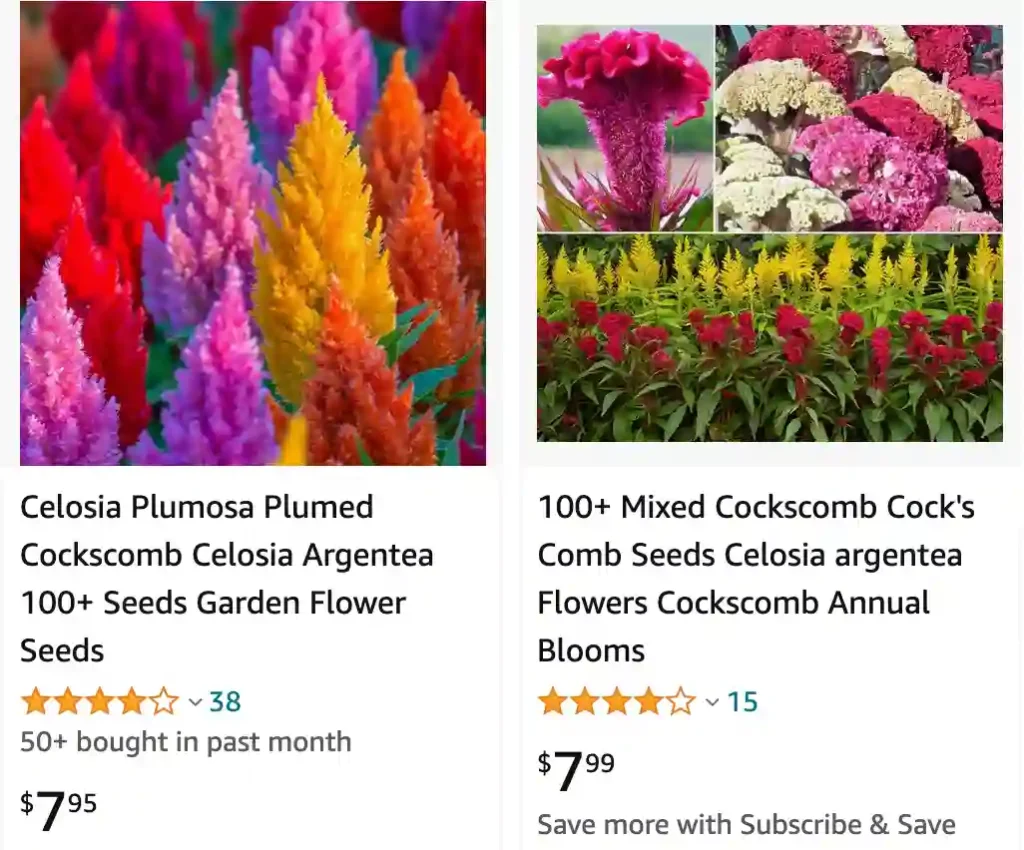
Celosia Argentea: A Feathery Friend for Your Garden
As a passionate gardener, I’m always on the lookout for new and interesting plants to add to my collection. Recently, I came across the Celosia Argentea, also known as the Plumed Cockscomb or Silver Cock’s Comb. This vibrant annual caught my eye with its unique, feathery blooms and dazzling colors.
Intrigued, I delved deeper into the world of Celosia Argentea, and let me tell you, there’s more to this plant than meets the eye! From its surprising origins to its easy-going care requirements, here’s everything I’ve learned about this fascinating flower.
46 Species in Genus Celosia
What is Celosia Argentea?
Celosia Argentea is a herbaceous plant belonging to the Amaranthaceae family. It boasts tropical origins, hailing from India and Nepal. Despite its exotic roots, Celosia Argentea thrives in many climates, making it a popular choice for gardens around the world.
The true stars of the show are the plant’s flowers. Unlike traditional flowers with delicate petals, Celosia Argentea boasts feathery bracts that resemble a rooster’s comb (hence the name). These bracts come in a stunning array of colors, from fiery red and sunny yellow to deep purple and even a silvery white, which aptly inspired the “argentea” part of its name.
How to Care for Celosia Argentea?
The beauty of Celosia Argentea is matched by its ease of care. Here are some simple tips to ensure your Celosia thrives:
- Sunlight: Celosia Argentea is a sun worshiper. Aim for at least 6-8 hours of direct sunlight daily for optimal growth and vibrant blooms.
- Soil: Well-draining soil is key. Amend your garden bed with sand or compost if needed to ensure proper drainage.
- Watering: Celosia Argentea prefers consistent moisture, but avoid waterlogging. Water deeply when the top inch of soil feels dry to the touch.
- Feeding: While not strictly necessary, a light application of fertilizer every few weeks can promote healthy growth and even brighter blooms. Opt for a balanced fertilizer diluted to half strength.
- Deadheading: To encourage continuous blooming, deadhead spent flowers by pinching them off at the base. This will prevent seed production and keep your Celosia putting its energy towards producing more beautiful flowers.
When to Transplant Celosia Argentea?
Celosia Argentea is typically grown from seeds. However, if you’re impatient like me, you can also find seedlings at your local nursery.
The key to successful transplanting is waiting for the right time. Ideally, transplant your Celosia Argentea seedlings outdoors after all danger of frost has passed. This ensures the young plants don’t get shocked by cold temperatures. In my experience, late spring or early summer is the perfect window for transplanting.
Is Celosia Argentea a Perennial?
While Celosia Argentea thrives in warmer climates, it’s generally considered an annual in most regions. This means it completes its lifecycle, from germination to flowering and seed production, within one growing season. However, in some frost-free areas with mild winters, Celosia Argentea might surprise you and self-sow, returning the following year.
Is Celosia Argentea Plumosa Edible?
There are two main varieties of Celosia Argentea: the Crested (Celosia Cristata) and the Plumed (Celosia Argentea Plumosa). The Crested variety is the one most commonly associated with the “cockscomb” appearance.
While some Amaranthaceae plants are known for their edible leaves, Celosia Argentea, including the Plumosa variety, is not generally considered edible. There’s limited information on its potential toxicity, so it’s best to err on the side of caution and admire its beauty from afar.
Adding Celosia Argentea to Your Garden
Celosia Argentea’s vibrant colors and unique form make it a versatile addition to any garden. Here are some ideas for incorporating it into your landscape:
- Companion Planting: Celosia Argentea pairs beautifully with other heat-loving plants like ornamental grasses, zinnias, and marigolds.
- Cut Flowers: Celosia Argentea’s long-lasting blooms make it a fantastic choice for cut flower arrangements. Simply cut the stems when the flowers are just beginning to open, and enjoy their vibrant color indoors for weeks.
- Containers: Celosia Argentea’s compact size makes it well-suited for container gardening. Place it on your patio, balcony, or even as a vibrant centerpiece for your outdoor dining table. With a little creativity, Celosia Argentea can add a touch of exotic flair to any space.
Beyond the Basics: Tips for Success with Celosia Argentea
Here are some additional tips to take your Celosia Argentea experience to the next level:
- Pinching: To encourage bushier growth with more flowers, pinch off the growing tip of your young Celosia Argentea plants. This will stimulate lateral branching, resulting in a fuller, showier plant.
- Deadheading spent blooms promptly not only encourages continuous flowering but also helps prevent unwanted self-seeding, especially if you live in a warmer climate where Celosia Argentea might attempt to overwinter.
- Overwintering (in mild climates): If you’re lucky enough to have a frost-free climate, you can attempt to overwinter your Celosia Argentea. After the first frost, dig up the plant carefully and pot it up. Bring it indoors to a sunny location and water sparingly throughout the winter. With some luck, it might surprise you with new growth come spring.
By following these simple tips, you can ensure your Celosia Argentea thrives and adds a touch of fiery beauty to your garden throughout the season. So, why not give this fascinating flower a try? You might just find yourself as captivated by its unique charm as I am.
If i die, water my plants!



